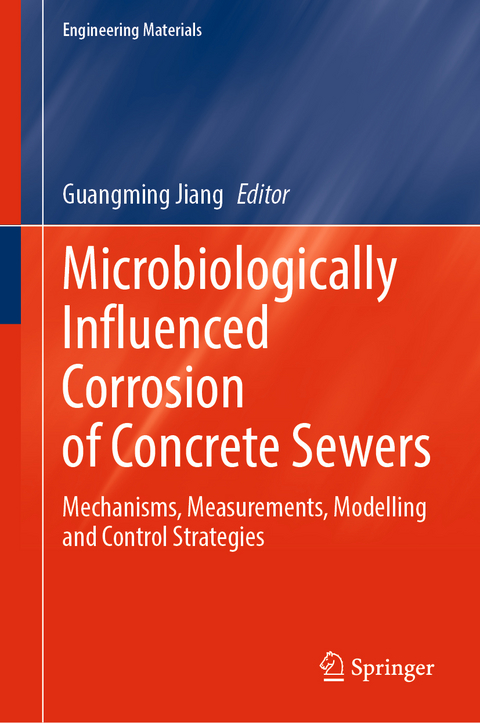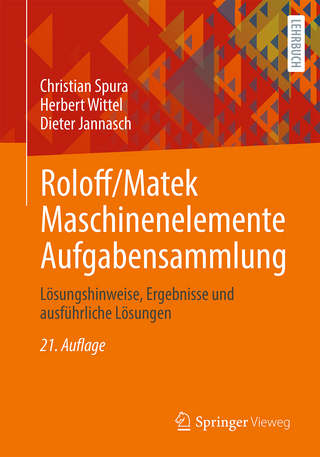
Microbiologically Influenced Corrosion of Concrete Sewers
Springer International Publishing (Verlag)
978-3-031-29940-7 (ISBN)
This book is a unique resource for professionals seeking a comprehensive understanding of microbiologically influenced corrosion in concrete sewers (MICC), which play a critical role in modern urban infrastructure. Corrosion can lead to structural collapse and significant financial losses due to the costly rehabilitation and replacement of damaged sewer systems. In the United States alone, sewer asset losses attributed to corrosion are estimated to reach $14 billion annually.
The book provides a cross-disciplinary approach to understanding the physical, chemical, and biological processes that contribute to microbiologically influenced concrete corrosion. Readers will learn about corrosion rate measurement and characterization methods, controlling environmental factors, corrosion prediction models, and mitigation and control strategies. The book also covers the development of corrosion-resistant concrete.
Written for civil engineers, environmental engineers, concrete technologists, and sewer operators and managers, this book is both informative and practical. It not only provides fundamental knowledge of the development of corrosion but also offers practical solutions that are economically and environmentally sustainable. By collating a range of corrosion analytics and control measures, this book is an essential reference for anyone seeking to prevent and manage concrete corrosion in sewer systems.
lt;p>Guangming Jiang was awarded Ph.D. at The University of Queensland (Australia). Also, he completed a Master of Applied Science in Environmental Microbiology at Lincoln University (New Zealand), and a Bachelor of Engineering in Environmental Engineering at Harbin Institute of Technology (China).
He has been conducting research on sewer corrosion and odour management since 2007 when he started his PhD at University of Queensland. Over the years, he worked on different aspects related to concrete corrosion in sewers: chemical dosing in wastewater, online control and optimization, fundamentals of concrete corrosion in sewers, corrosion modelling, and development of corrosion-resistant concrete. He worked with many industry partners, primarily from different water utilities in Australia and internationally. His research has led to commercialized technology and contributed to the documented saving of hundreds of millions of dollars for the water industry. He provided concrete corrosion testing for major international wastewater infrastructure projects including the Singapore Deep Tunnel Sewerage System Phase 2. Also, he has published nearly 60 top quality journal papers related to sewer corrosion and odour management, most of them in the Nature Index journals.
He is an editor or associate editor of multiple top-tier journals, including Water Research, Journal of Water Process Engineering, iScience, and Journal of Environmental Engineering (ASCE), in addition to being an editorial board member of Journal of Hazardous Materials, Environment International, and International Journal of Hygiene and Environmental Health. He is also a member of major water associations, including International Water Association (IWA), Australian Water Association (AWA) and Smart Water Networks Forum (SWAN).
Part I. Corrosion processes and mechanisms.- Chapter 1. Concrete sewer systems and wastewater processes related to concrete corrosion.- Chapter 2. Mechanisms and processes of concrete corrosion in sewers.- Part II. Corrosion measurements.- Chapter 3. Testing of sulfide uptake rate (SUR) and its applications.- Chapter 4. Concrete corrosion characterization using advanced microscopic and spectroscopic techniques.- Chapter 5. Characterization of corrosion microbial communities.- Chapter 6. A systematic laboratory testing of concrete corrosion resistance in sewers.- Part III. Modelling of concrete sewer corrosion.- Chapter 7. Controlling environmental factors of microbiologically influenced concrete corrosion in sewers.- Chapter 8. Mathematical modelling for the concrete corrosion of sewer systems.- Part IV. Corrosion control strategies.- Chapter 9. Advances on corrosion-resistant concrete for sewers.- Chapter 10. Corrosion resistance of calcium aluminate cements in sewer environments.-Chapter 11. Alkali-activated materials for sewers.- Chapter 12. Surface treatment for corroding concrete sewers.
| Erscheinungsdatum | 05.05.2023 |
|---|---|
| Reihe/Serie | Engineering Materials |
| Zusatzinfo | XII, 261 p. 97 illus., 69 illus. in color. |
| Verlagsort | Cham |
| Sprache | englisch |
| Maße | 155 x 235 mm |
| Gewicht | 571 g |
| Themenwelt | Technik ► Maschinenbau |
| Schlagworte | admixture • Bio-concrete • Chemical dosing • Concrete coating • Concrete corrosion • Corrosion Control • corrosion rate • Corrosion resistant concrete • corrosion testing • Data-Driven Models • Geopolymer • Hydrogen sulfide • Microbially induced corrosion • Rebar Corrosion • Service Life • Sewer • Sewer lining • Sewer rehabilitation • wastewater • Wastewater Infrastructure |
| ISBN-10 | 3-031-29940-X / 303129940X |
| ISBN-13 | 978-3-031-29940-7 / 9783031299407 |
| Zustand | Neuware |
| Haben Sie eine Frage zum Produkt? |
aus dem Bereich


